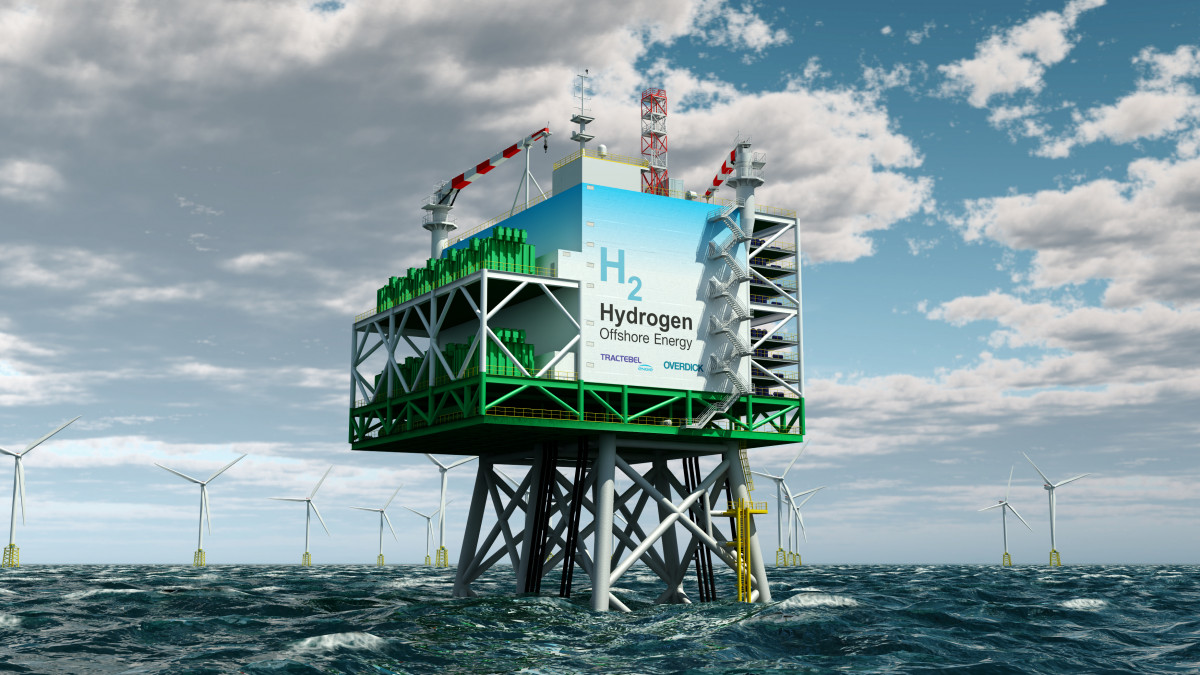Massive offshore wind expansion could solve German hydrogen strategy gridlock
Using offshore wind power to produce green hydrogen could be the solution for a major remaining point of contention among German ministries drafting a long expected hydrogen strategy, writes Steven Hanke in Tagesspiegel Background.
The ministries had differed on the level of ambition for domestic hydrogen production using renewable electricity. While the research ministry has called for 10-15 gigawatt (GW) capacity of the necessary electrolysers by 2030, the economy ministry has recommended only 3-5 GW. The latter worries that Germany will not be able to reach its target of a renewables share of 65 percent of total power consumption if the facilities also have to produce green hydrogen. The latest draft strategy now stipulates additional offshore wind capacity, writes Hanke.
He adds that a draft amendment for the offshore wind energy law for the first time foresees a long-term expansion target – 40 GW by 2040. The government, coastal states and regulators recently reached an agreement to raise the current 2030 expansion target of 15 GW to 20 GW – as laid out in last year’s climate package.
In the fight against climate change, hydrogen made with renewable electricity is increasingly seen as a silver bullet for sectors with particularly stubborn emissions, such as heavy industry and aviation. Germany has set out to become a global leader in "tomorrow's oil" by beating Asian countries. The long-delayed National Hydrogen Strategy looks set to become part of a "green stimulus" programme to restart the economy after the coronavirus crisis.
Meanwhile, the German Engineering Federation (VDMA), the German Hydrogen and Fuel Cell Association (DWV) and the German Technical and Scientific Association for Gas and Water (DVGW) wrote a joint letter to the economy and environment ministries urging for the speedy introduction of a hydrogen strategy to create planning security, reports Handelsblatt.
They are also calling for the inclusion of so-called blue hydrogen made from natural gas in combination with carbon capture and storage or use (CCSU) in the strategy. This has been another point of contention among the ministries, where the environment ministry only wants to include green hydrogen made with renewable electricity. In a speech at a hydrogen conference organised by Wirtschaftsforum SPD, environment minister Svenja Schulze said that due to the close integration of Germany in the EU energy system, blue hydrogen would also be used in Germany. “I will not push for banning the import,” the minister said, but added that the only truly future-proof path was with green hydrogen.
Making “Made in Bavaria” a hydrogen seal of quality
The Bavarian government presented its own strategy with which it aims to develop the state into a global leader in the necessary technology. "Made in Bavaria is to become a hydrogen seal of quality,” said state economy minister Hubert Aiwanger. “We will develop a hydrogen economy that will strengthen Bavaria as a high-tech location, create jobs and, last but not least, support the transformation process of the Bavarian auto industry.”
Meanwhile, the Fraunhofer Institute for Energy Economics and Energy System Technology (IEE) published a study in which it warned that the scarce green hydrogen should only be used where there are no economic alternatives or where it has special advantages over other options. The IEE says in the study, which focusses on heating in buildings, that the use of hydrogen is not necessary for the supply of decentralised building heat, “nor does it make sense for reasons of cost and efficiency”.


